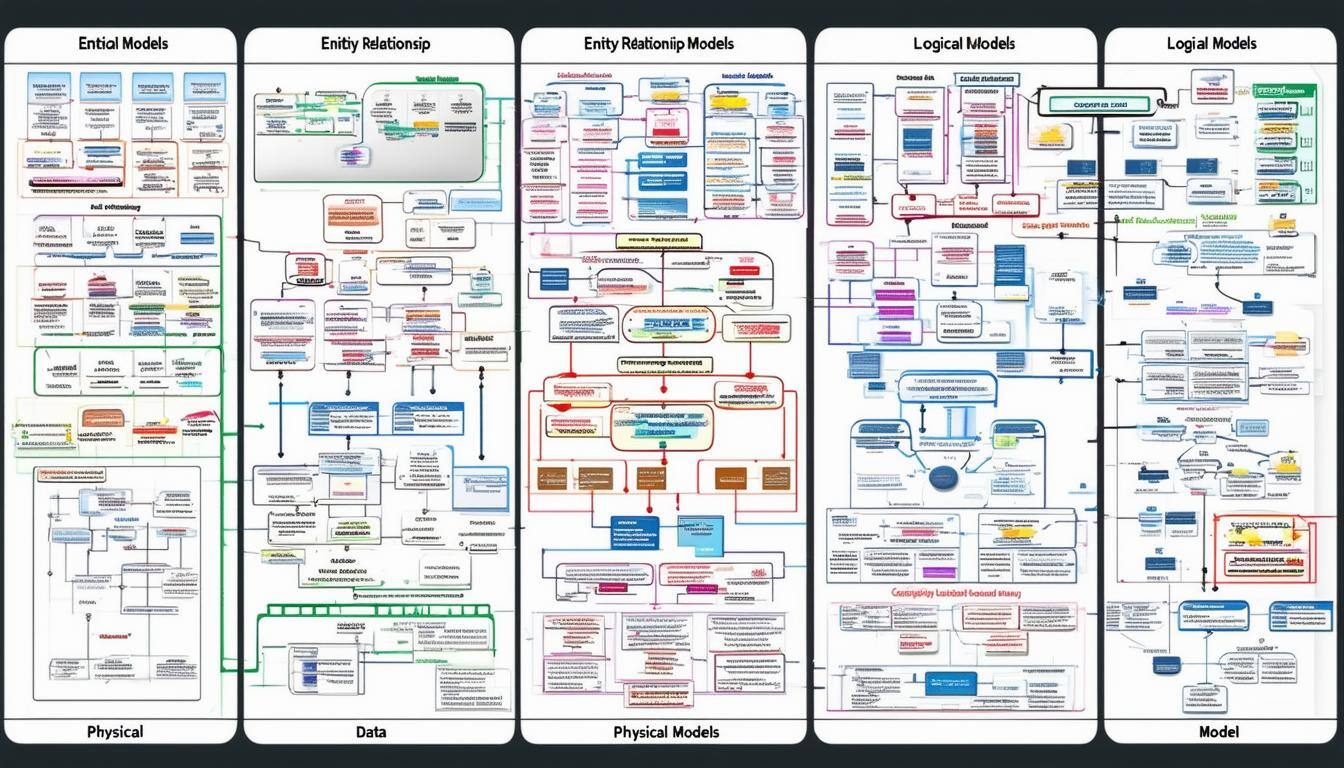Know Your System's Various Data Models
They say, live and learn. I say, if you are trying to merge two different IT systems, such as i2 and SAP, you better learn how the data models of the systems look if you hope to survive and thrive. During one of my more challenging ‘rescue projects’, we were using SAP as the Order Management System and i2 as the Transportation Management system. The client was the world’s 2nd largest retailer, and the business case was strong-but could essentially be boiled down to ‘fill the trucks up’, which, ultimately, we did.
Entity Relationship Models Can Reveal Hidden Assumptions
Before we got there, though, the project had suffered an early heart attack and was on life support. After struggling for weeks, then months to make it work, finally figured out that the data models of the two systems were mirror images of each other.

Once we were able to build a working Entity Relationship Diagram (as best as we could) of the two systems, then the problems we had encountered were easily solved, although the hours required to do so were still long.
What were some of the lessons learned and how do they apply to a Business Intelligence project?
- Earlier rather than later, “profound knowledge” of the underlying data model of any systems you are working with will be required.
- When you are developing integration between any two systems, regardless of what EAI system you're using, the business process still requires you to model and understand your data model.
- Having a rock-solid naming convention approach will help you deconstruct an existing data model, and without it, you won’t know what the vendor actually uses or intended.
- Each transformation your data model involves will increase your processing time, probably well beyond what you originally estimated.
- Hardware sizing is directly affected by your data modeling decisions. If you are looking at SAP HANA hardware sizing, i.e, small, medium and large, expect to make a lot of refinements as your data model evolves.
- Regarding Transportation Management systems data models and the related Business Intelligence data models, they are very different because they serve very different purposes.
- There are many common myths about data modeling maturity models which you should strive to overcome during projects such as this.
Criticality of Data Modeling
Using proper data modeling concepts impacts analytics data modeling, data science, and data analytics. Data analytics all go hand-in-hand—you need a quality data model to get the most impactful data analytics for effective business intelligence that'll inform your future decision-making. The process of creating a data model involves forcing each business unit to look anew at how they contribute to their organizational goals.
Data Science
A data scientist is a professional who specializes in analyzing and interpreting large amounts of data to extract valuable insights and information. They rely on their data modeling skills and advanced analytics skills to make sense of massive data sets that are spread across multiple dissimilar systems. Data modeling involves creating a structure or framework that represents the data and its relationships, while advanced analytics skills enable data scientists to apply statistical techniques and algorithms to uncover patterns, trends, and correlations within the data.
By understanding the underlying data models of the systems they work with, data scientists can effectively integrate and analyze data from different sources. This knowledge is crucial for developing integration between systems and ensuring the accuracy and reliability of the data. Additionally, data modeling decisions have a direct impact on hardware sizing and processing time. Therefore, a data scientist must have a solid understanding of data modeling concepts to optimize the performance of their analytics and provide valuable insights for effective business intelligence and decision-making.
Tools for Performing Data Analysis
Performing data analysis relies heavily on not only a robust data model but also a range of tools used by data analysts and data scientists. Some of the essential tools for data analysis include NumPy, Scikit-Learn, Tableau, QLik, and Python. These tools provide functionalities for data manipulation, statistical analysis, machine learning, and visualization. In addition to these tools, there are several other data science tools that can be leveraged to enhance data analysis, such as R, SQL, Apache Hadoop, Apache Spark, and TensorFlow.
Integrate and Analyze Data
Understanding data models is crucial for data scientists as it allows them to effectively integrate and analyze data from different sources. By leveraging these tools and having a solid understanding of data models, data analysts and data scientists can optimize the performance of their analytics, gain valuable insights for effective business intelligence, and make informed decisions.
Data Warehouse and Data Modeling
An enterprise data warehouse is a centralized repository that stores structured and unstructured data from various sources within an organization. It serves as a comprehensive and integrated information system that enables businesses to analyze and make informed decisions based on their data.
Data models are used to organize and represent the data within the enterprise data warehouse, providing a structured framework that defines the relationships and patterns within the data. These data models rely on known data patterns and data structures, which help in understanding and interpreting the data effectively.
Unleash Data Driven Performance Optimization
By understanding the underlying data models, businesses can integrate and analyze data from different sources, optimize performance, and gain valuable insights for effective business intelligence and decision-making. Proper data modeling concepts are crucial for analytics data modeling, data science, and data analytics, as they ensure the accuracy and reliability of the data and contribute to the success of a business intelligence project.
Relational Databases
Data models can be created through reverse-engineering efforts that extract them from existing systems. That's done to document the structure of relational databases that were built on an ad hoc basis without upfront data modeling and to define schemas for sets of raw data stored in data lakes or NoSQL databases to support specific analytics applications.
Data modeling is an essential practice in the field of data management. It serves as a fundamental discipline that allows businesses to effectively organize and structure their data. By understanding the purpose and benefits of data modeling, organizations can optimize their data management strategies and make informed decisions based on accurate and reliable data.
Role of a Data Modeler
Typically, a data modeler or data architect plays a crucial role in the success of a modeling project. They are responsible for initiating the project by conducting interviews with business stakeholders to gather requirements and gather details about the organization's business processes.
Essential First Step
This initial step is essential because it helps the data modeler understand the specific needs and objectives of the organization, which will guide the development of the data model.
Stakeholder Interviewing Skills are Crucial

During the interviews, the data modeler engages with key individuals across different departments and functions within the organization. This allows them to gain insights into how the data is generated, collected, stored, and used in various business processes. By understanding the existing systems and workflows, the data modeler can identify potential challenges or limitations that may arise during the integration process.
Conceptual and Logical Models
In addition to gathering requirements, the data modeler also collaborates with business analysts to design both the conceptual and logical models.
Conceptual Model
The conceptual model serves as a foundational blueprint that provides a holistic and high-level understanding of the data entities and their relationships within the organization. It is a visual representation that captures the essence of the data and showcases how different entities interrelate with each other.
By creating a conceptual model, businesses can gain a comprehensive overview of their data landscape and identify key entities and their interactions. This understanding enables stakeholders to align their data management strategies with the organization's goals and objectives.
The conceptual model acts as a bridge between the business requirements and the technical implementation. It helps stakeholders visualize the data ecosystem and facilitates effective communication between business analysts, data modelers, and other relevant stakeholders.
In the conceptual model, data entities are represented as abstract concepts, devoid of any technical details. It focuses on defining the major entities and the relationships between them, capturing the essence of the organization's data landscape without delving into the intricacies of data attributes or implementation details.
The conceptual model lays the foundation for further refinement in the data modeling process. It serves as a starting point for developing the logical and physical data models, where the specific attributes and structures of each entity are defined.
By having a clear and well-defined conceptual model, organizations can ensure that their data modeling efforts align with their business objectives. It provides a roadmap for designing and implementing robust data models that accurately represent the organization's data needs and facilitate effective data integration, analysis, and decision-making.
In conclusion, the conceptual model is a crucial component of data modeling, providing a high-level overview of data entities and their relationships. It acts as a guiding framework for developing more detailed logical and physical data models, enabling organizations to effectively manage and utilize their data assets for business intelligence and decision-making purposes.
Logical Model
The logical model defines the specific attributes and structures of each entity. This collaborative effort ensures that the data model accurately represents the organization's data needs and aligns with its overall business objectives.
Furthermore, the data modeler's expertise is instrumental in translating the requirements and conceptual design into a physical data model that can be implemented in the IT systems. They must consider factors such as database management systems, performance optimization, and data security while designing the physical model. By leveraging their knowledge and experience, the data modeler can create a robust and efficient data model that supports the organization's integration goals.
Collaborative Effort

Overall, the role of a data modeler or data architect is critical in the success of a modeling project. Through their interviews with business stakeholders and collaboration with business analysts, they ensure that the data model accurately reflects the organization's needs and objectives. This understanding of the underlying data model is essential for developing integration between systems and ensuring the accuracy and reliability of the data. With their expertise and skills, data modelers play a vital role in optimizing data management strategies and enabling effective business intelligence and decision-making.
Real Time Operating Environments
In fast-paced manufacturing industries, data modeling often involves real-time information rather than static data types. Real-time data refers to information that is continuously updated and available immediately as it is generated. This type of data set is dynamic and constantly changing, providing a more accurate and up-to-date representation of the manufacturing processes. For example, in a manufacturing plant, real-time data modeling can involve monitoring the production line's efficiency and identifying any bottlenecks or deviations from the expected performance.
By analyzing real-time data, manufacturers can make immediate adjustments to optimize production and minimize downtime. This is different from other types of data modeling, such as static data types, which involve analyzing historical data that may not reflect the current state of the manufacturing processes. Real-time data modeling enables manufacturers to make data-driven decisions in real-time, ensuring efficient and agile operations.
Data Stewardship
Data modellers play a crucial role in designing data models that ensure data integrity and data governance. They use various tools and techniques, such as ER diagrams and dimensional data, to create logical and conceptual data models. These models help in organizing and representing the data within an enterprise data warehouse, enabling businesses to analyze and make informed decisions based on their data.
Data integrity ensures that the data is accurate, consistent, and reliable, while data governance ensures that the data is managed and used appropriately. By understanding the underlying data models, businesses can optimize performance, integrate data from different sources, and gain valuable insights for effective business intelligence and decision-making.
High Level Overview
The conceptual model provides a high-level overview of data entities and their relationships, serving as a guiding framework for developing more detailed logical and physical data models. The logical model defines the specific attributes and structures of each entity, ensuring that the data model accurately represents the organization's data needs and aligns with its overall business objectives. Overall, data modellers play a vital role in optimizing data management strategies and enabling effective business intelligence and decision-making through their expertise and collaboration with stakeholders.
You MUST Always Be Improving Your Data Model
Improving your data model and getting useful performance from both the OLTP systems and related OLAP systems is one of the critical steps in getting your SAP BW data model to Rock!
We offer data model audits which you can use to get to profit quicker.
People Who Read This Also Read
- 5 Lessons Learned in SAP BW Data Modeling
- 5 Keys To Successful Strategy Execution
- SAP SEM CPM Balanced Scorecard Input Template
- 10 Advanced SAP BW Project Estimation Techniques
- 7 Questions Typically Answered By A BI Strategy
- Hire SAP Business Intelligence Consultant
Please leave a Comment or Ask Any Questions You May Have.
Are you struggling with merging two different IT systems? Have you ever encountered problems while trying to make two systems work together? If yes, then you need to learn about the data models of the systems you're working with. As an expert blogger and SAP BW Senior Consultant, I have learned from my experience that understanding the underlying data model of any system is crucial, especially when developing integration between two systems. Having a good naming convention approach is vital for deconstructing the existing data model. Each transformation your data model involves increases your processing time, and hardware sizing is directly affected by your data modeling decisions. Whether you're working with Transportation Management systems or Business Intelligence data models, they are very different and serve various purposes. If you're struggling with your data model, we offer data model audits that you can use to get to profit quicker. So, feel free to leave a comment or ask any questions you may have.



